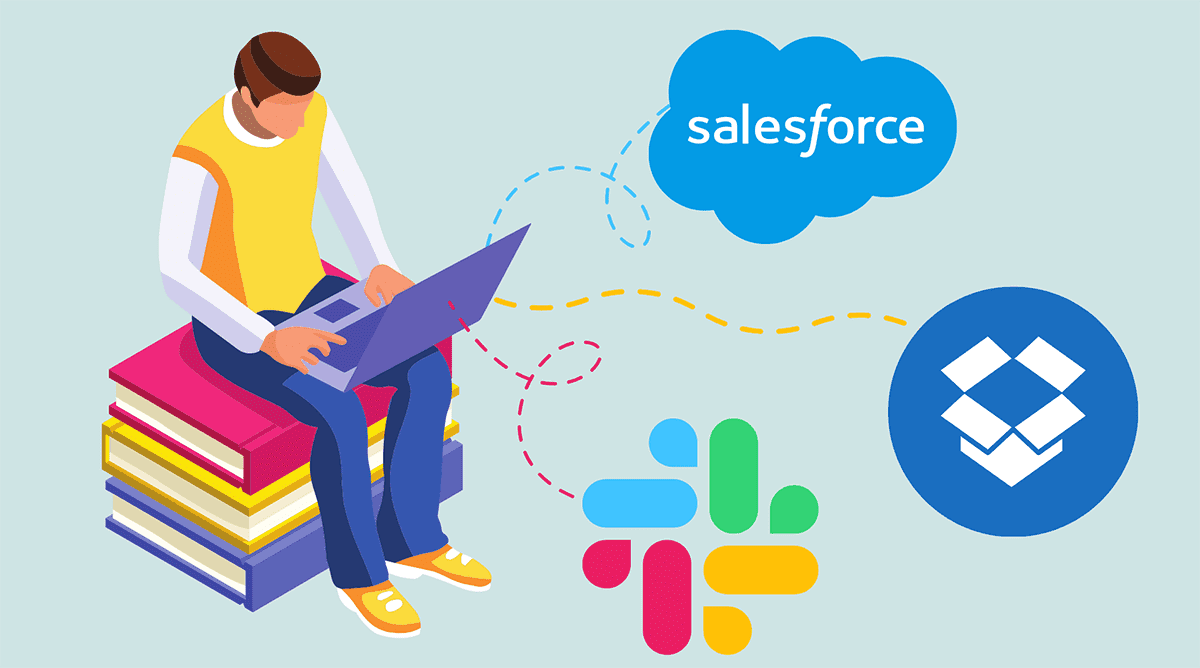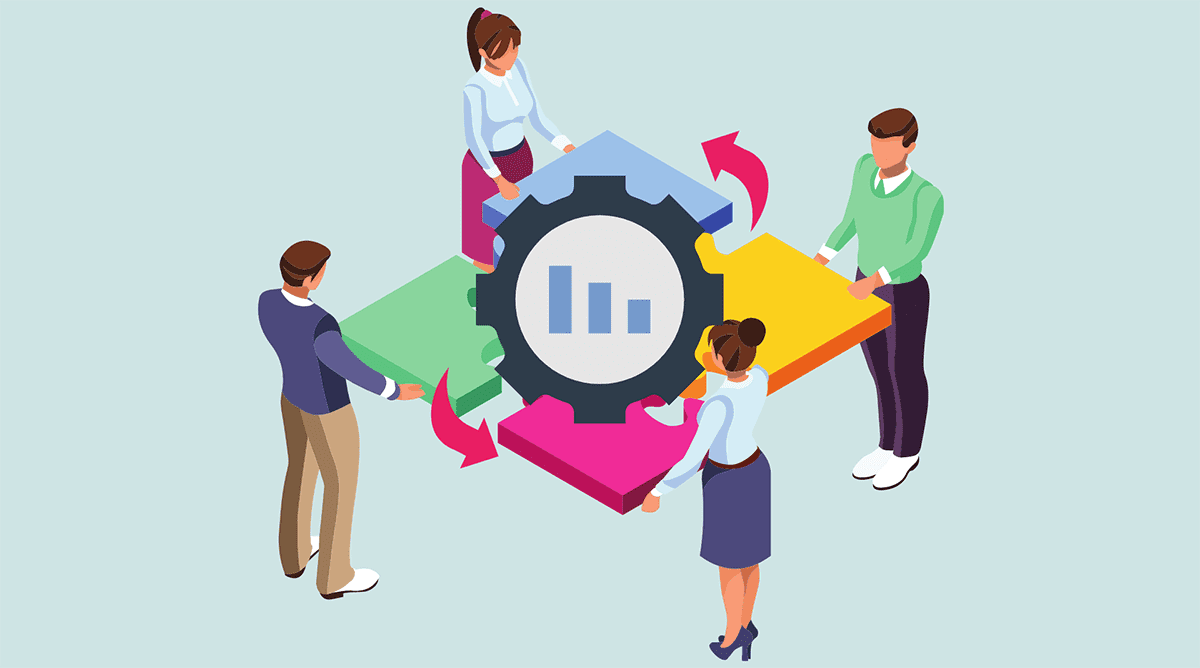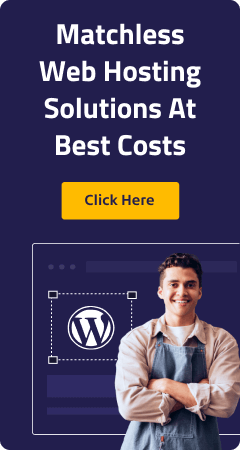If you are not a newbie in the IT world, you’ve probably heard of the best debate in the technology world, which is Cloud vs. SaaS. While both options are related and have a lot in common, they don’t refer to the same thing. Understanding the difference between SaaS and cloud computing is one of the things you should care about to better select services designed to benefit your business. Let’s begin with defying each of these separately.
Table Of Content
Cloud Computing Overview
To put it simply, cloud computing refers to a technology that helps to deliver computing services via the cloud. In SaaS vs. Cloud, clouding solution based on SaaS service eliminate the need to buy expensive hardware and software. Cloud-based products/services run in the cloud and can be accessed 24/7 simply using the Internet connection and a device of your choice (PC, mobile devices, etc.). Cloud computing is represented by three service models: IaaS (Infrastructure-as-a-Service), PaaS (Platform-as-a-Service) and finally SaaS (Software-as-a-Service) model that we’ll talk about later. Some of the biggest cloud-service providers include Google (Google Cloud Platform), Amazon (AWS), Microsoft (MS Azure), and IBM (IBM Cloud).
Refer: Everything About The Concept Of Cloud Computing
Additionally, cloud computing solutions are divided into private, public, and hybrid ones. A private cloud is a cloud-based environment exclusively accessed and used by a single organization. In this case, the cloud can be either hosted by a third-party cloud service provider or by a company’s data center. Private cloud is commonly used by financial or governmental organizations and institutions that require strong security and total control over their data. Public cloud is owned and managed only by a third-party cloud service provider. Public cloud users can access services and manage their data via their personal accounts using the Internet connection. Hybrid cloud combines elements of both private and public cloud models, where users can switch between two solutions when it’s needed, marking the difference between SaaS and Cloud.
Before cloud computing, companies would have to own physical servers to store their data and software. According to Shareweb cloud-computing company research, an average company in the SMB (small and midsize business) sector can save up to 79% of its budget by switching from physical servers to cloud-based ones. With these results, it’s no surprise that the public cloud service market size is expected to reach $362.3 billion by the end of 2022.
Before we get down to the SaaS solutions, let’s briefly take a look at the other two services models. IaaS, aka cloud infrastructure service model, offers cloud-based services for networking, storage, and servers. IaaS users pay on demand. PaaS vendors provide access to their cloud environment where users can build, test, and deliver their own software and applications.
Software as a Service Overview
As it was mentioned before, SaaS is a part of cloud computing and refers to cloud-based software and applications that are not owned by users but are licensed to them. In the digital vs. cloud race, SaaS applications can be accessed via a web browser and don’t require on-premise installation, maintenance, and configuration. These are ready-to-use solutions that run and are hosted on SaaS providers’ servers and are owned by these providers.
SaaS providers normally use a subscription model where users can pay monthly or annually for access to the app. Besides, in this case, service providers are the ones responsible for the security of your data and for the timely software updates and support. Some of the most popular SaaS solutions include Salesforce CRM platform, Dropbox hosting service, Slack communication platform, and Zendesk customer service platform.

Comparing Cloud vs SaaS
Even though SaaS is a part of cloud computing, the two terms have one significant difference. Cloud computing allows users to access data, as well as to manage and customize apps via a cloud-based server. On the other hand, SaaS gives you access to an already designed software that you can use straight away and can’t change its configuration.
Brief overview of managed cloud service vs. SaaS
| Feature | SaaS | Cloud Computing |
| Definition | Software delivered over the internet on a subscription basis | On-demand delivery of computing services (e.g., servers, storage, databases) over the internet |
| Focus | Applications | Infrastructure |
| Examples | Salesforce, Google Workspace, Zoom | AWS, Azure, GCP |
| Ownership | Vendor | Vendor (public/private) or organization (private) |
| Flexibility | Limited customization | High flexibility and scalability |
| Security | Shared responsibility between vendor and customer | Shared responsibility between provider and customer |
| Deployment | Usually multi-tenant architecture | Various deployment models (public, private, hybrid) |
Benefits of SaaS as a Part of Cloud Computing
For a detailed note on SaaS vs. Cloud computing, it is essential to remember that cloud-based solutions aim to make organizations’ lives easier and help them better meet constantly changing market demands.
Read: Types of Cloud Computing in Business Environment
1. Cost-effectiveness
According to the BetterCloud research between Cloud vs. SaaS, the cost is the most important criterion an organization cares about when it comes to investing in SaaS solutions. If a company decides to adopt a cloud-based solution, the capital expenses are excluded, thus decreasing the overall IT spendings. Since everything is stored in the cloud, there is no need to have physical servers and spend extra money on their regular maintenance, as well as to have in-house server support specialists. Besides, cloud computing solutions allow you to pay only for the functionality you actually need which means that you won’t be overpaying features that are useless for your specific business needs.
2. Flexibility and Scalability
The business world requirements and competition are constantly growing for cloud versus SaaS workloads, thus forcing companies to introduce changes into their IT infrastructure. Cloud-based apps have the ability to scale and grow together with your needs and help you better respond to market changes. For instance, if your company plans to expand to new markets and requires more IT resources, features, and functionality, cloud solutions can be easily customized by your service provider.
3. High-level Security
Security is the 2nd most important criterion that business owners care about. From data encryption to multi-factor authentication and API keys, SaaS providers apply the latest security technologies to make sure your data is safe. Modern cloud-based apps are made to prevent potential threats such as hacker attacks, malware, and data breaches, leading to another difference between SaaS and Cloud.
4. Data Backups and Disaster Recovery
No matter how much control you have over your organization, there are always things that can happen without your influence and can cause damage to your business. To add an extra layer of data security for SaaS vs. Cloud computing services, SaaS providers enable automatic data backup via the cloud, which makes data recovery easy, and it normally costs you nothing.
5. Full Compliance
Besides the market requirements, governmental laws and regulations are also constantly changing and it can be complicated to constantly keep track of them. Reliable cloud service providers normally design their applications in accordance with the latest rules. It means that users no longer need to worry about checking on these changes and focus more on growing their business.
6. 24/7 Access
As we’ve mentioned before, you only need the Internet connection and a device of your choice to access cloud-based applications. This allows increasing your staff’s flexibility and productivity and gives them an opportunity to work from anywhere anytime, thus responding to urgent requests more quickly and efficiently.
7. Increased Speed to Market and Higher Product Quality
For many developing enterprises it’s important to launch a new product as fast as possible without compromising its quality. When an app is developed in the cloud, every member of the development team can assess the product to run tests and fix bugs, thus increasing the quality of the final product. Besides, with the cloud, the app is delivered to the market faster, thus giving users early access to the product.
8. Enhanced Staff Collaboration
Whether your company has 10, 200, or 1000 employees, it’s important for your team members to stay in touch and collaborate more efficiently. This particular benefit played one of the key roles especially during the beginning of the COVID-19 pandemic when most of the companies were forced to switch to remote work. Cloud solutions make it easy to share and exchange data within a single system, and even provide collaborative spaces such as chats and in-built messengers to connect different departments and even offices across various locations. As a result, with a clouding solution based on SaaS, your employees no longer need to switch between applications and waste precious time sharing information with their colleagues.
9. Continuous Updates and Support
One of the benefits of managed cloud service vs. SaaS apps is their ability to automatically perform system updates once they are released by the provider. Checking for the latest versions and launching updates are no longer a user responsibility, cloud solutions will do it all by themselves. This not only helps your tech team to save valuable time but also decreases the costs associated with third-party support and consultation.
Are There Any Downsides?
Just like any other technology, cloud computing has its drawbacks:
1. Dependence on the Internet Connection
There is software that should be pre-installed on your device and can perfectly work without access to the Internet. SaaS apps, on the other hand, are hosted in the cloud and require the Internet to work. While the dependence of cloud apps from the Internet connection can be a benefit and provides 24/7 access to the app, it also can be a downside once the connection is lost. The slow internet connection can also negatively affect your company’s performance, staff productivity, and deadlines. However, some of the latest SaaS apps provide basic functionality even when you are not connected to the Internet so you can access data and use key features when you’re offline.
2. Lack of Control
It’s not a secret that maintaining control is way more complicated when you are using SaaS solutions rather than when you have on-premise servers and software. All of the data as well as the app itself is stored in the cloud that is mainly controlled by a cloud service provider. To avoid any data losses and breaches, it’s recommended to trust only reliable SaaS vendors that apply strong security measures, especially when choosing between digital vs. cloud.
3. Comparing the Costs
Before you switch to the cloud solution from a regular on-premise software, make sure to compare the two options and analyze the costs you’re going to carry out. While in most cases cloud apps are likely to be more cost-effective, there are several installed solutions with features that may be crucial for your business.
Using SaaS Solutions to Enable Digital Transformation
Business owners already see great potential for SaaS and other cloud-based solutions as a driving force of digital transformation. Digital transformation can be defined in different ways but in general, it refers to a process of adopting digital solutions and applying the latest tech trends to drive business growth and performance. With SaaS solutions, companies no longer have to think of creating and adopting new business models but rather take ready-to-use software and customize it in accordance with the business-specific needs.

Why Companies Use Cloud Computing to Power Digital Transformation
- Relying on the Internet Technology: It’s hard to find or even imagine there is a company that still doesn’t use IT for business benefit. Technologies have already become a big part of our business and private lives. With the increasing awareness of digital transformation, companies that have nothing to do with the actual software development still tend to invest more in IT every year. SaaS is one of the technologies that businesses are willing to adopt more in the next few years. According to researchers, 93% of CIOs are planning or already using SaaS applications.
- The Size Doesn’t Matter: Enterprise solutions were never available to smaller businesses due to their high cost. With SaaS solutions, no matter what size a company is, any business can get the features they need to perform better in the constantly growing competitive markets. Cloud service providers normally offer different subscription options for small and midsize businesses, as well as for large enterprises to meet their budgets and needs. SaaS tends to democratize digital transformation giving the opportunity for all companies to grow and evolve.
- Business Agility: No matter how good your business’s state is now. To succeed and be able to face current competition, any company should embrace changes and eager for more. This is what digital transformation is all about. SaaS can replace traditional software and provide more opportunities for future growth and improvements. Whenever you have new demands, SaaS can respond quickly to your requests. On the other hand, continuous updates and improvements support your constantly growing tech needs and don’t let these solutions outgrow your business.
- Work Better for Your Customers and Employees: Customer-centric SaaS solutions like Salesforce aim to bring value to your customers and employees. Staff members get more opportunities and tools to better reach out to clients, generate and qualify leads, and close deals. At the same time, they provide clients with only relevant information and quickly respond to their requests. SaaS solutions also deliver valuable insights into your customers’ behavior. This data can be used to adjust your marketing and sales strategies, improve your products and services to make sure you give your customers exactly what they need. As a result, customers’ satisfaction rates and sales are growing together with your employees’ performance.
- Eliminate Human-Related Errors: We all are humans and sometimes we make mistakes. Automation of repetitive and time-consuming tasks is one of the crucial parts of digital transformation. SaaS solutions help to solve the problem of human errors and provide employees with more time to spend on more valuable and important tasks.
There is no secret recipe to achieving digital transformation. However, adopting SaaS or any other cloud-based solution can become your first step on the way to receiving major benefits and improvements. SaaS vs. Cloud-based computing helps drive the change for the better by increasing productivity and collaboration and cutting costs.
With these technologies and the difference between SaaS and cloud services, companies can be more creative, more efficient, and more competitive than ever. MilesWeb aims to aid organizations in their digitization journey by providing a complete range of cloud hosting and managed services.
FAQs
Is SaaS a part of the cloud?
Indeed, even though there’s a debate about managed cloud services vs. SaaS, SaaS (Software as a Service) comes under the category of cloud computing. Cloud computing relates to all the types of services, including servers, storage databases, and networking, that are accessed over an internet connection. SaaS utilizes cloud architecture to provide internet-based application programs for a fee.
How do SaaS and other cloud services contribute to digital transformation?
If we look into digital vs. cloud, then combining SaaS with other cloud technologies is essential as it gives a business the power to improve agility and flexibility. With the emergence of cloud services, firms have on-demand availability of IT resources that guarantee instant scaling. Also, workers can use the tools to improve teamwork and come up with new ideas.
What are the key benefits of using SaaS applications?
Among SaaS vs. cloud-based services, SaaS applications have a number of advantages, namely:
– Decreased spending on IT resources: Any modifications to the software or hardware are no longer necessary.
– Enhanced reach: Applications can be operated from virtually anywhere as long as there is internet connectivity.
– Manual processes and maintenance are eliminated: The vendor does the entire software maintenance in the sense that their systems or applications will always be of the most recent versions regarding features and security support.
– Enhanced teamwork: Provides for easy cooperation between teams and across different units of the organization.
– Greater flexibility: Convert between increased cloud resource usage and diminished usage whenever business requirements dictate such.
– Reduced IT burden: Improve the use of IT personnel to help them concentrate on other key projects.
What are the different types of cloud computing deployments?
Here are the other types of cloud computing deployments:
– Public Cloud: Services available over the web through other service providers like AWS, Azure, GCP, etc.
– Private Cloud: Established for a specific entity, and it can be managed in-house or by an external service provider.
– Hybrid Cloud: The use of both public and private clouds so that an organization can enjoy the advantages of both.
– Community Cloud: Utilized by various organizations with similar issues, like government departments.
How does SaaS play a crucial role in digital transformation initiatives?
Without extending much of a debate between software as a service vs. cloud, it is noted that SaaS undermines the boundaries of digitalization by providing tools and applications that would increase productivity and collaboration to new levels.
New applications like CRM, customer support, and e-commerce platforms are creating exciting new ways for customers to interact with companies through the use of the cloud.
Driving business agility with cutting-edge ventures enables businesses to adapt quickly to evolving market conditions and new ventures. Business process optimization and lowering IT costs.
Through clouding solutions based on SaaS services, organizations can hasten their digital transformation journey and enhance competitiveness in today’s market.








